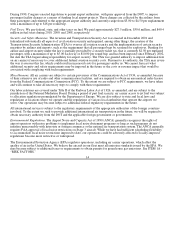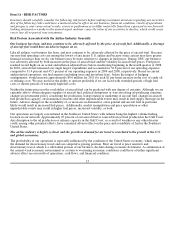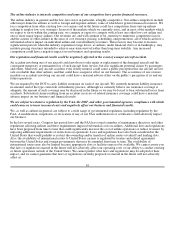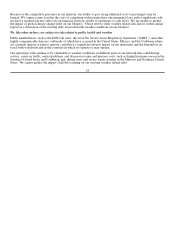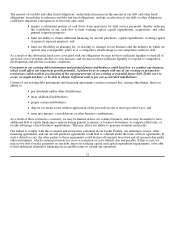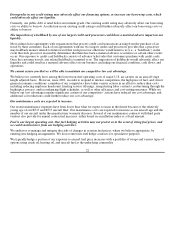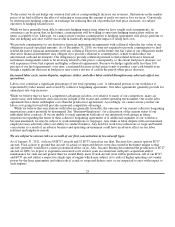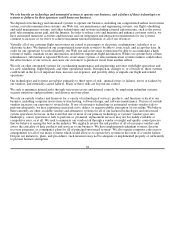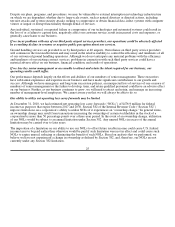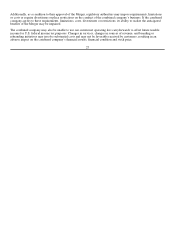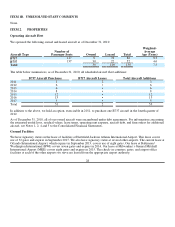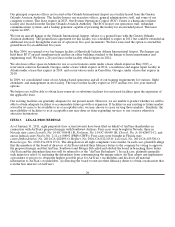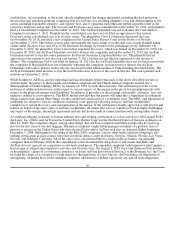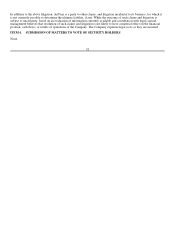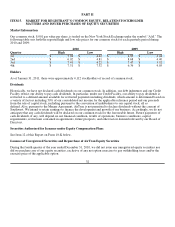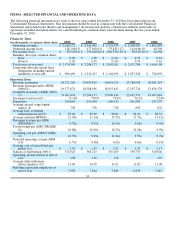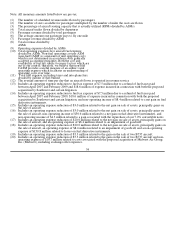Airtran 2010 Annual Report Download - page 32
Download and view the complete annual report
Please find page 32 of the 2010 Airtran annual report below. You can navigate through the pages in the report by either clicking on the pages listed below, or by using the keyword search tool below to find specific information within the annual report.
We rely heavily on technology and automated systems to operate our business, and a failure of these technologies or
systems or failures by their operators could harm our business.
We depend on technology and automated systems to operate our business, including our computerized airline reservations
system, our telecommunication systems, our Web site, our maintenance and engineering systems, our flight scheduling
and yield management systems, and other technologies and systems including external infrastructure, such as the power
grid, telecommunications grid, and the Internet. In order to reduce costs and maintain and enhance customer service, we
have automated numerous activities and functions and our integration and interaction requirements for our systems
continue to increase as we strive to achieve maximum rational utilization of all of our resources.
Virtually all of our customer flight reservations are issued to passengers as electronic confirmations, ticketless or as
electronic tickets. We depend on our computerized reservation system to be able to issue, track, and accept this data. In
order for our operations to work efficiently, our Web site and reservation system must be able to accommodate a high
volume of traffic, maintain secure information, and deliver important flight information. While our systems have certain
redundancies, substantial or repeated Web site, reservations system, or telecommunication systems failures could reduce
the attractiveness of our services and cause our customers to purchase travel from another airline.
We rely on other automated systems for coordinating maintenance and engineering activities with flight operations and
for crew scheduling, flight dispatch, and other operational needs. Disruption in, changes to, or a breach of, these systems
could result in the loss of important data, increase our expenses, and possibly delay or impede our flight and related
operations.
Our technologies and systems are subject primarily to three types of risk: internal errors or failures, errors or failures by
our vendors, and externally caused failures. Many of these risks are beyond our control.
We seek to minimize internal risks through various processes and internal controls, by employing redundant systems,
security initiatives and procedures, and disaster recovery plans.
We rely on outside vendors and licensors for a variety of technological services, products, and functions critical to our
business, including computer reservation system hosting, software design, and software maintenance. Our use of outside
vendors increases our exposure to several risks. If one of our major technology or automated systems vendors fails to
perform adequately, we may experience increased costs, delays, or negative public perception of our airline. We believe
there currently are other available vendors and alternative systems for all of our licensed technologies and outsourced
system operations; however, in the event that one or more of our primary technology or systems' vendors goes into
bankruptcy, ceases operation or fails to perform as promised, replacement services may not be readily available at
competitive rates, or at all. We seek to minimize our vendor risk through a vendor oversight and quality control process
that we believe is among the best in the industry. We regularly review the risk profiles of all of our major vendors and
assess the criticality of their products and services to our business. We have implemented redundant systems, disaster
recovery programs, or contingency plans for all of principal outsourced systems. We also require computer code escrow
arrangements for all of our major systems which would allow us to operate key systems in the event of a vendor failure.
Despite our initiatives, plans, and procedures, such measures may not be adequate or implemented properly or sufficiently
to prevent business disruption.
24


